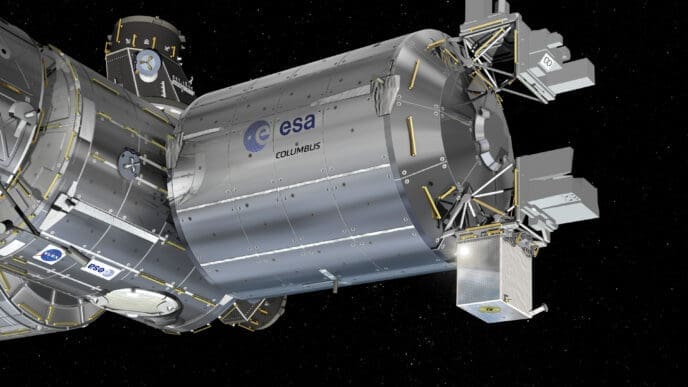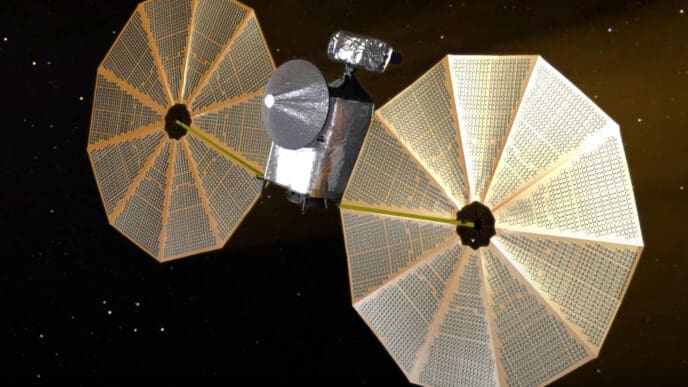Axiom Space has announced a strategic shift in the sequence of module assemblies for its commercial space station, aiming for a streamlined approach that aligns with NASA’s timeline for the International Space Station’s (ISS) deorbiting.
Axiom Space, based in Washington, has reconsidered the order in which it will deploy modules for the assembly of its commercial space station, known as Axiom Station. This change comes as part of an effort to expedite the development of a free-flying station, while also accommodating NASA’s deorbiting plans for the ISS. The company’s original plan involved installing a habitat module on the ISS by late 2026, followed by another habitat module and a research module, with a power and thermal module featuring an airlock coming last. This final module would enable the station components to undock at the end of the decade to form a free-flying station.
However, Axiom recognized a potential conflict with NASA’s plans for the U.S. Deorbit Vehicle (USDV), which is intended to dock at the ISS’s Node 2 Forward port in preparation for the ISS’s eventual retirement. Axiom’s initial sequence planned for their modules to occupy this port, risking interference with the USDV operations. According to Axiom’s Chief Operating Officer Mark Greeley, having the USDV dock to the Axiom modules presented a risk if deorbit operations commenced before the station was ready to separate.
In response, Axiom decided to begin with the installation of the Payload Power Thermal Module (PPTM) on the ISS, which will now berth at one of the ports used by cargo spacecraft, such as Cygnus, instead of Node 2 Forward. This revised sequence allows for NASA’s later flexibility to bring the deorbit vehicle without having to reconfigure the forward port. As Axiom’s chief engineer, George Motter, stated, this approach benefits both NASA and Axiom by removing scheduling conflicts for deorbit preparation.
The plan now involves the PPTM arriving on the ISS first. Once it’s installed, the first habitat module, Hab1, will be launched. Unlike the prior plan, PPTM will detach from the ISS and dock with Hab1 to create a two-module free-flying station capable of supporting four crew members. This transition could occur as early as 2028, which is ahead of the initial timeline. Motter emphasized the seamless transition from ISS docking to independent station functions, with the ability for both modules to maintain independent orbits temporarily if necessary.
Further down the line, Axiom will add more elements including an airlock module, a second habitat module, and a research module. These additions will each have their own power and thermal management capabilities. Notably, the first habitat module comes equipped with a robotic arm for station reconfiguration, a feature that expands the station’s operational capabilities significantly.
Despite these changes, Axiom plans to continue sending Private Astronaut Missions (PAMs) to the ISS. The company has managed three missions so far and is gearing up for a fourth in spring 2025, though they face competition for the limited PAM slots available through NASA. According to Greeley, these changes will not affect the overall cost of the project, although it will favorably adjust the company’s cash flow by better aligning financial requirements with the new sequence.
The construction work for the PPTM is in progress at Thales Alenia Space Italia, with components initially intended for the habitat modules being repurposed. Delivery of the PPTM to Axiom is expected in 2025 with a launch slated for no earlier than 2027. The duration of the PPTM’s stay on the ISS prior to its transition to free flight remains flexible, allowing Axiom to extend its presence to transfer necessary ISS payloads and mitigate operational risks. Deputy Program Manager David Romero noted the benefits of a longer ISS presence, citing opportunities for operational trials and transferring equipment to the PPTM.
Through a revised module assembly sequence, Axiom Space is positioning itself to not only meet NASA’s space station transition requirements but also to accelerate its own development timeline. This strategic realignment showcases how the company seeks to balance technical innovations with pragmatic solutions in commercial space operations.
Source: Spacenews












